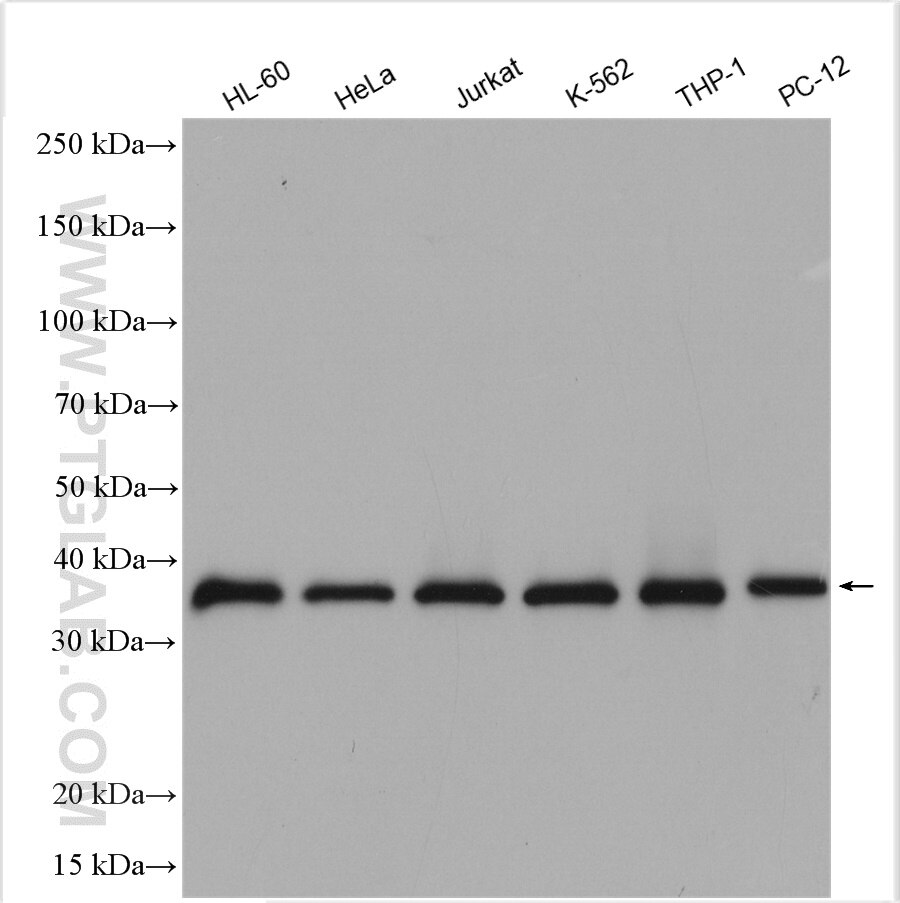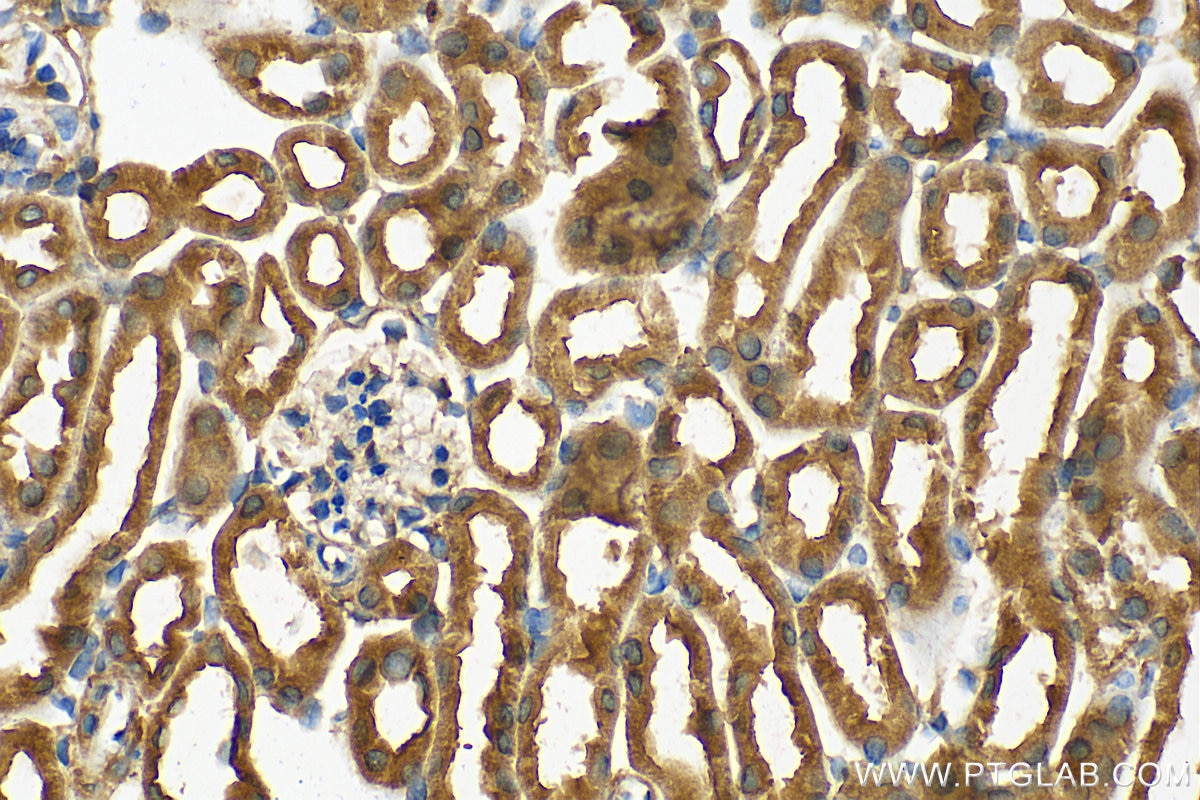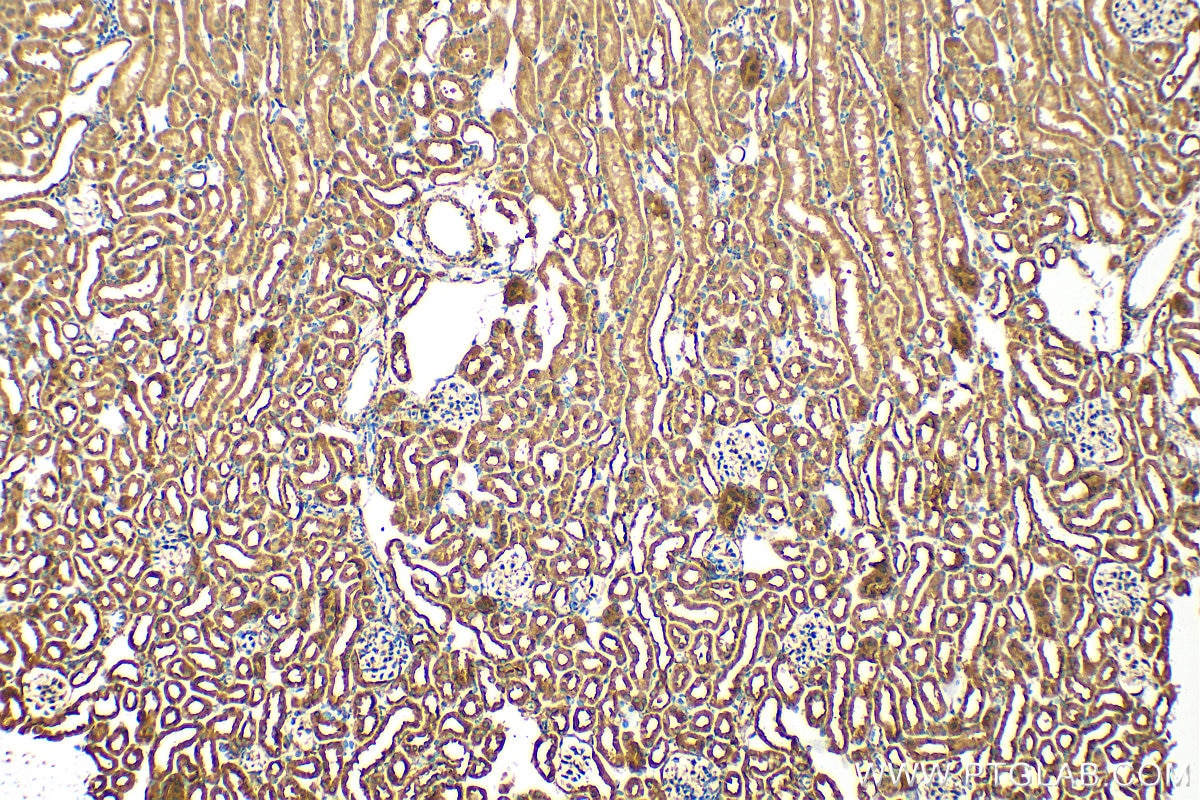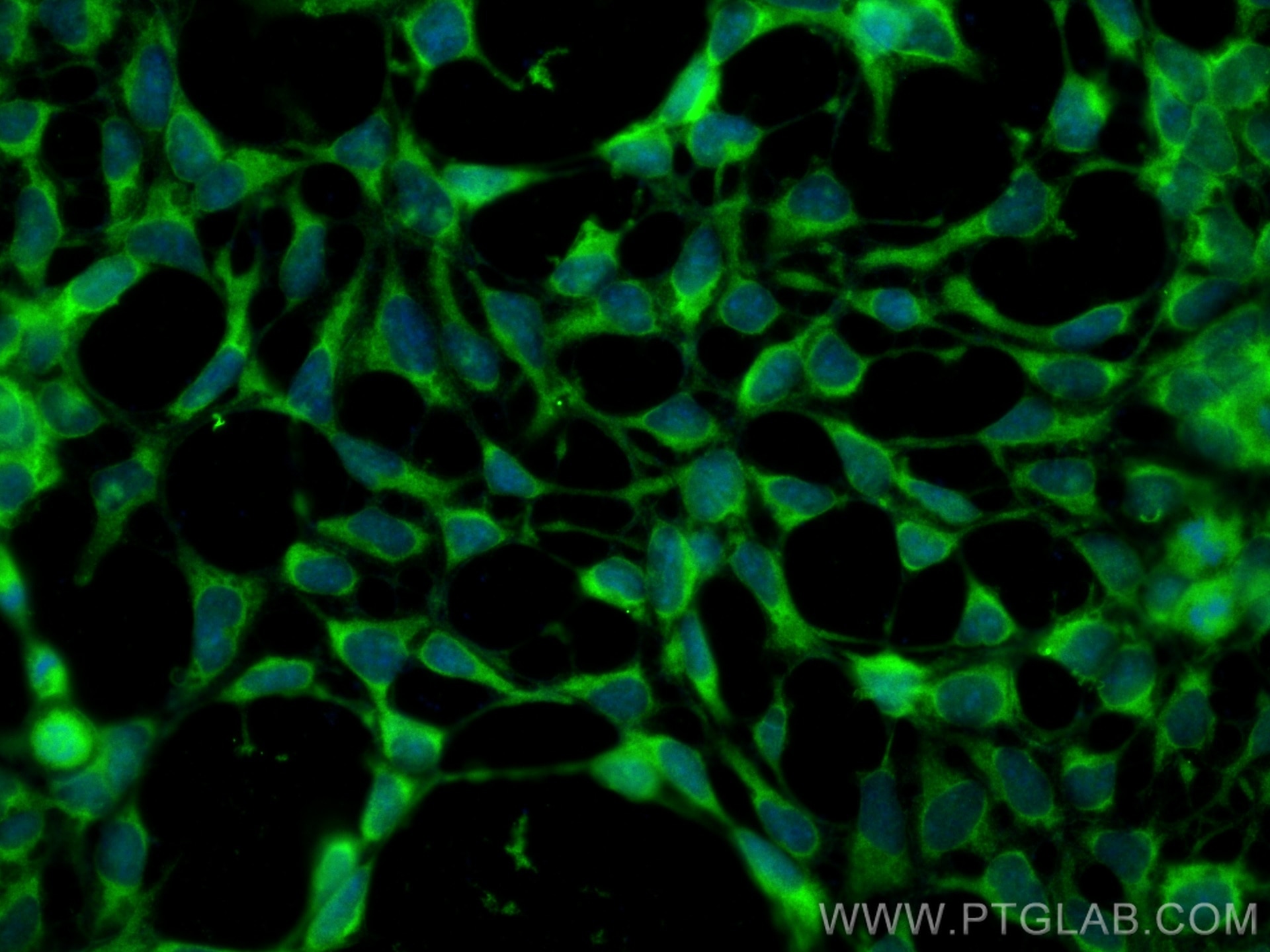ATG3 Polyklonaler Antikörper
ATG3 Polyklonal Antikörper für WB, IHC, IF/ICC, ELISA
Wirt / Isotyp
Kaninchen / IgG
Getestete Reaktivität
human, Maus, Ratte und mehr (1)
Anwendung
WB, IHC, IF/ICC, ELISA
Konjugation
Unkonjugiert
Kat-Nr. : 11262-2-AP
Synonyme
Galerie der Validierungsdaten
Geprüfte Anwendungen
| Erfolgreiche Detektion in WB | HL-60-Zellen, HeLa-Zellen, Jurkat-Zellen, K-562-Zellen, PC-12-Zellen, THP-1-Zellen |
| Erfolgreiche Detektion in IHC | Mausnierengewebe Hinweis: Antigendemaskierung mit TE-Puffer pH 9,0 empfohlen. (*) Wahlweise kann die Antigendemaskierung auch mit Citratpuffer pH 6,0 erfolgen. |
| Erfolgreiche Detektion in IF/ICC | HEK-293-Zellen |
Empfohlene Verdünnung
| Anwendung | Verdünnung |
|---|---|
| Western Blot (WB) | WB : 1:2000-1:12000 |
| Immunhistochemie (IHC) | IHC : 1:500-1:2000 |
| Immunfluoreszenz (IF)/ICC | IF/ICC : 1:200-1:800 |
| It is recommended that this reagent should be titrated in each testing system to obtain optimal results. | |
| Sample-dependent, check data in validation data gallery | |
Veröffentlichte Anwendungen
| WB | See 17 publications below |
| IHC | See 1 publications below |
| IF | See 1 publications below |
Produktinformation
11262-2-AP bindet in WB, IHC, IF/ICC, ELISA ATG3 und zeigt Reaktivität mit human, Maus, Ratten
| Getestete Reaktivität | human, Maus, Ratte |
| In Publikationen genannte Reaktivität | human, Hausschwein, Maus, Ratte |
| Wirt / Isotyp | Kaninchen / IgG |
| Klonalität | Polyklonal |
| Typ | Antikörper |
| Immunogen | ATG3 fusion protein Ag1785 |
| Vollständiger Name | ATG3 autophagy related 3 homolog (S. cerevisiae) |
| Berechnetes Molekulargewicht | 36 kDa |
| Beobachtetes Molekulargewicht | 36-40 kDa |
| GenBank-Zugangsnummer | BC024221 |
| Gene symbol | ATG3 |
| Gene ID (NCBI) | 64422 |
| Konjugation | Unkonjugiert |
| Form | Liquid |
| Reinigungsmethode | Antigen-Affinitätsreinigung |
| Lagerungspuffer | PBS mit 0.02% Natriumazid und 50% Glycerin pH 7.3. |
| Lagerungsbedingungen | Bei -20°C lagern. Nach dem Versand ein Jahr lang stabil Aliquotieren ist bei -20oC Lagerung nicht notwendig. 20ul Größen enthalten 0,1% BSA. |
Hintergrundinformationen
Autophagy is a lysosome-dependent conserved catabolic process in response to various stresses, such as oxidative stress and ischemia, for the degradation and recycling of aged or dysfunctional intracellular components and damaged organelles. A large group of autophagy-related genes (ATGs) have been identifed as essential drivers in diferent stages of autophagy. Autophagy-related 3 (ATG3), one of the autophagyrelated gene family members, serves as an E2-like enzyme contributing to the conjugation of microtubule-associated protein light chain 3 (LC3) to lipid phosphotidylethanolamine (PE). ATG3 plays a signifcant role in the regulation of autophagy, viability, and death.
Protokolle
| Produktspezifische Protokolle | |
|---|---|
| WB protocol for ATG3 antibody 11262-2-AP | Protokoll herunterladen |
| IHC protocol for ATG3 antibody 11262-2-AP | Protokoll herunterladen |
| IF protocol for ATG3 antibody 11262-2-AP | Protokoll herunterladen |
| Standard-Protokolle | |
|---|---|
| Klicken Sie hier, um unsere Standardprotokolle anzuzeigen |
Publikationen
| Species | Application | Title |
|---|---|---|
Cell Death Dis Cytoplasmic fragment of CD147 generated by regulated intramembrane proteolysis contributes to HCC by promoting autophagy. | ||
Chemosphere Genome-wide transcriptional profiling and functional analysis reveal miR-330-MAPK15 axis involving in cellular responses to deoxynivalenol exposure. | ||
Front Cell Dev Biol Aquaporin-8 transports hydrogen peroxide to regulate granulosa cell autophagy | ||
Front Immunol Toxoplasma gondii CDPK3 Controls the Intracellular Proliferation of Parasites in Macrophages. | ||
Oncotarget Upregulation of the lncRNA Meg3 induces autophagy to inhibit tumorigenesis and progression of epithelial ovarian carcinoma by regulating activity of ATG3. | ||
Ecotoxicol Environ Saf Exposure to DEHP induces testis toxicity and injury through the ROS/mTOR/NLRP3 signaling pathway in immature rats. |





